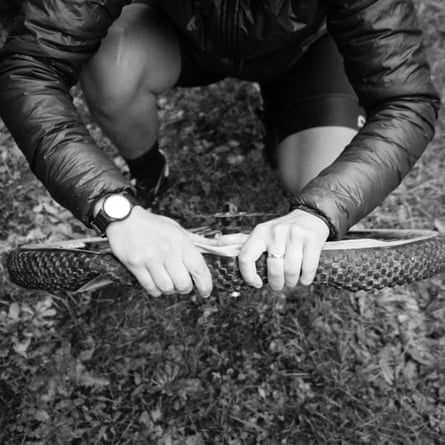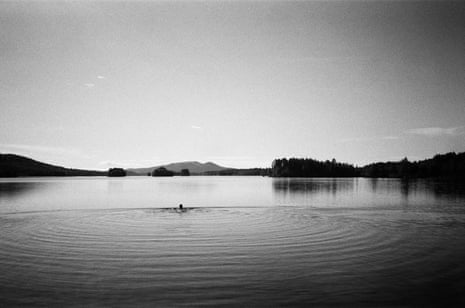Last summer I cycled 7,600km (4,722 miles) along a route called the European Divide Trail, which runs through nine countries, all the way from Arctic Norway to the Atlantic coast in Portugal, mostly camping out along the way. The idea was sparked by an article I saw on the internet – on a website called bikepacking.com. I slowly went from thinking, “That looks cool,” to, “I’m going to do it.” It seemed a bit crazy, but somehow a few months later, in June 2022, it was happening! I was heading off for three months – and I’d even persuaded my friend Max to come along for the first three weeks.

I’d done some bikepacking trips in the past, but usually only a couple of nights. Once I did a nine-day trip, cycling from my house in Pembrokeshire to the top of Snowdon and back, but I had a really bad and lonely time on my own. Somehow that didn’t put me off … Also, it was an amazing stroke of luck that I met Anna from Sheffield, who was cycling the same route, on the first day of the European Divide trail.

I had a mountain bike and a basic bikepacking setup, and aimed to cycle an average of 100km a day. With just 90 days in Europe to do the trail – all that my post-Brexit UK passport would allow – I figured I would spend 86 days riding and have a couple to spare either end. On some days I would cycle more – 120, 130, even 140km – and on others, when we reached the mountains, far less.




The route was designed by a British guy called Andy Cox in 2021 to be in a similar vein to the Great Divide mountain bike trail in the US. It begins at Grense Jakobselv, deep in the Arctic Circle in Norway and near the Russian border, then runs through Norway, Finland, Sweden, Denmark, Germany, France, Switzerland and Spain, all the way to Cabo de São Vicente in Portugal.

About two-thirds of it is off-road, some sections are quite rocky and technical, and it passes through many fairly remote areas in Scandinavia and the mountains of Spain. It doesn’t follow any geographical continental divide, but, as the website says, it does “cross many cultural, political, economic and environmental divides”, and is the longest predominantly off-road bikepacking route in the world.
The starting point is a bit weird, with CCTV cameras and a military checkpoint – but Max and I cycled away downhill and soon reached a beach, where we went for a dip in the sea. It was such a buzz to get going.




On our very first day, as we sat eating lunch, we started talking to Anna, who was on her own and turned out to be cycling the Divide too. Not many people have undertaken it – I think only 12 have completed it so far – so this was quite the coincidence and we joined forces, which was amazing. I’m not sure where I would have ended up had I been on my own after Max had gone.


The terrain is varied: endless forests, lakes, rivers and dirt roads in Scandinavia, then it’s the farmland, woodland, heathlands and grasslands of central Europe, and finally the diverse Iberian peninsula (the highest points are in eastern Spain at about 2,000m). We were only in Norway for a couple of days, cycling fairly close to the coast. It was beautiful, all fjords and big cliffs, and we camped out in the woods (wild camping is legal in Norway, Finland and Sweden). Then suddenly we were in Finland – border crossings turned out to be totally uneventful – where we cycled through forests for about four days. The route then heads through Sweden, where we spent three weeks.

Denmark was quite easy-going, but Germany was hard! Very hard. In places the trails were simply unrideable. One day we had a 2km stretch where trees had been felled across the track – hundreds upon hundreds of trees. It took us hours to lift our heavy bikes over each and every one. On the final one Anna fell over, straight on to her knee with her bike on top. That was a low point, for sure.
READ RELATED: Nordstrom Shoe Sale 2023: 16 Best Early Deals to Shop


As the route went on, we moved from flatter areas in the north to the more mountainous areas in the south. But although all the up and down was difficult, the landscape became more and more interesting. I think the mountains of France and Spain were my favourites places. The Vosges, Jura, Pyrenees and Sierra de Javalambre were quite special. There is something amazing about reaching a little refuge with a sunset view all to yourself after riding and pushing your bike uphill for a full day or two. All along the route, we went to places that you would never have thought to go – little towns and villages where tourists don’t normally venture.

And, of course, the people you meet along the way and the kindness of strangers stays with you. The biggest challenge is finding food and water stops. One morning in Sweden in the middle of nowhere we were saved by the nicest Dutch couple, Marten and Karin. Having reached a closed shop the night before we were low on supplies, and they insisted we take their packet of digestive biscuits and chocolate bar to keep us going. In Sweden a man with a little boat helped us across the Lainio River because we’d missed the ferry. In Germany a guy called Benni gave us a place to camp on his family’s land and food one evening, and we met many other kind and interesting people everywhere we went.

My advice to anyone thinking of undertaking a big adventure is: just do it. I didn’t do too much preparation – most of my energy went into simply getting myself to the starting point. I figured I could work out everything else from there, as long as I had the basics. I had maps and planned each day as I went, looking for villages and places to stop for provisions along the way. I was very glad to have Anna with me so we could work as a team. Of course, things went wrong – mechanical and physical – but we fixed them and carried on.


As for training, my thinking was: “If I’m not fit enough at the start, I’ll be fit enough by the end.” Which turned out to be true. Within about a week of cycling I could feel my body was completely different from when I started, and by the end so much more again. It is quite surprising how quickly the body adapts.

Though I may not have noticed it until my return home, I grew so much in confidence during those few months. Because of the many problems solved and new experiences lived, I can do things now that I couldn’t before. And here are just a few of the lessons I learned: civilisation isn’t civilised; there will be problems – the trail will teach you how to fix them; bring a full roll of duct tape; never pass a good swim spot; lube your chain; eat, eat, eat. And most importantly: strangers make great friends.

Interview by Jane Dunford
For more information, maps and advice visit europeandividetrail.com. The best time to tackle the route is from late May or early June starting in the north, or from late March or early April starting in the south.
Jacob’s photobook from his trip, Strangers Make Great Friends, is available at shop.midnowhere.co.uk. Visit his website at midnowhere.co.uk
